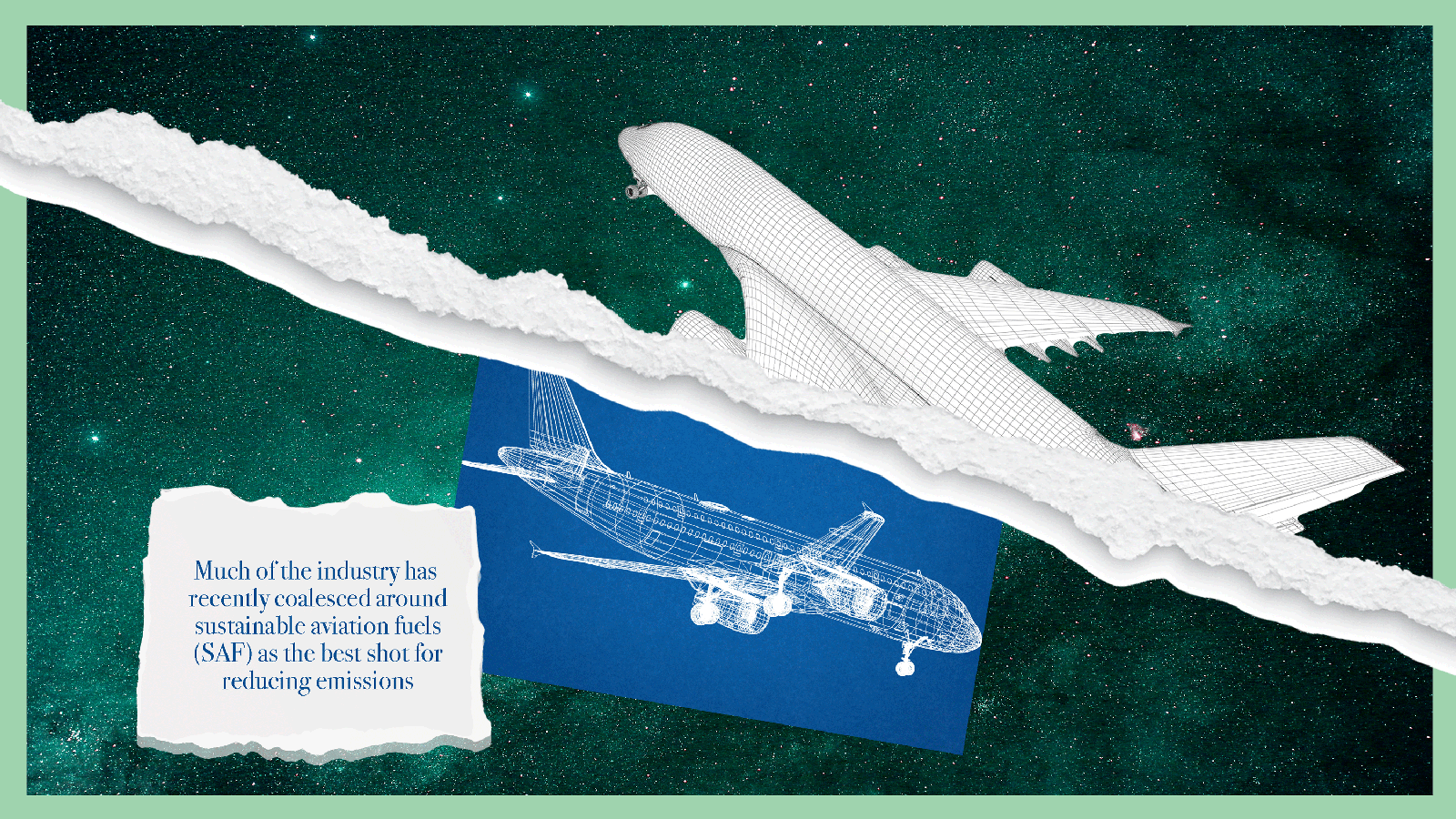In the near term, some innovations are already promising marginal improvements including artificial intelligence (AI) assisted navigation systems, which can help identify ways to reduce the need for burning jet fuel; design developments like folding wingtips to expand wingspan, as seen on the recently launched Boeing 777x; and modifying flight routes to avoid contrails, responsible for the majority of aviation’s non-CO2 warming impacts.
But the kinds of “radical changes” needed to significantly move the needle remain a work in progress.
Andrea Edelman
To visualize a few possible solutions, imagine rocket engines on planes, Tesla-inspired aircraft, or some hybrid of both. These propositions require inventing or scaling alternative propulsion systems – essentially, new ways to power airplanes without conventional jet fuel.
The leading technology here is hydrogen-powered engines. “This is already done in space rockets, so it’s a solution that already exists. But it’s also difficult to put in an airplane,” says Palacios. There’s also the growing field of electric-powered plane concepts such as Sweden-based start-up Heart Aerospace, with airlines including Air Canada and United planning to fly its electric planes on short domestic routes.
Airbus has bet big on hybrid hydrogen aircraft, announcing three futuristic ZEROe aircraft concepts, including one trippy, funhouse mirror-looking plane called the “Blended Wing Body.” The aerospace company ambitiously aims to have a mature hybrid hydrogen aircraft ready for commercial flights within the next two decades.
Hydrogen, electric, and hybrid aircraft could play a crucial role in decarbonizing short- and mid-haul flights says Jo Dardenne, director of aviation at the nongovernmental organization Transport & Environment. Think Hawaiian island hopping and intercity flights within European countries.
But many experts believe these new concepts hit big snags when it comes to long-haul flights due to their limited flight ranges and the weight of today’s batteries. A major setback considering that flights over six hours are those responsible for the majority of aviation emissions.
“You’ll never be able to fly from Paris to New York in the next 30 years with a hydrogen plane or an electric plane. The ranges are just too far,” says Dardenne. “We can’t forget the bigger picture, which is we need solutions for long-haul flights.” And the controversial carbon offsetting, which she calls “the biggest climate scam,” is not going to bridge the gap. “You can’t rely on offsets to clear your climate bills.”
Andrea Edelman
The challenge: long-haul flights without fossil fuels
That’s why many experts believe a second scenario is more scalable, though a little less science fiction. Here the focus is on developing sustainable aviation fuels (SAF) that can power existing airplane engines. Palacios describes this as the “ideal solution,” as it could address the challenges of long-haul flights while sticking to the basic mechanics of how airplanes safely operate now.
Much of the industry has recently coalesced around SAF as the best shot for reducing emissions, says Nicolas Jammes, a spokesperson for the International Air Transport Association (IATA), the trade organization representing the world’s airlines. It’s central to airlines’ target to achieve “net zero carbon by 2050.”
“It is the only reliable avenue to decarbonize the sector without disrupting the air connectivity that drives the global economy,” says Jammes.
These fuels are already being phased in, with more than 50 airlines working with SAF to some degree. More than 450,000 flights have already taken off with some percentage of SAF blend. Last year, regional Swedish airline BRA became the first to test a flight using 100 per cent SAF powering both its engines, according to SAF supplier Neste. And production has increased, up 200 per cent from 2021 to 2022, per IATA estimates.
But a key challenge is ensuring that “the right kind” of these fuels are invested in, says Dardenne. “Not all SAF are created equal.” Transport & Environment, a leading European nonprofit advocating for cleaner transportation, is currently advocating against the use of “biofuels” that come from crops, which scientists say adds pressure to global food supplies and leads to deforestation. Instead, what’s known as “synthetic” or “e-fuels” are seen as better options as they can be produced artificially through an energy-intensive process of combining hydrogen with carbon dioxide.








